
Patna: The Heart of Ancient and Modern India
Discover Patna, an ancient city with a rich tapestry of history and culture, vibrant markets, delicious cuisine, and modern attractions, nestled along the sacred Ganges River.
Patna, the capital of Bihar, is a city that beautifully blends its ancient heritage with modern dynamism. As one of the oldest continuously inhabited cities in the world, Patna has a rich history that dates back over 2,500 years. The city was once the seat of the powerful Magadha Empire and has been a melting pot of cultures, religions, and traditions. Today, Patna stands as a bustling urban hub, offering a unique mix of historical sites, cultural experiences, and contemporary attractions. Patna’s historical significance is evident in its numerous landmarks. The city’s most famous attraction is the Golghar, a massive granary built by the British in the 18th century. Climb to the top for a panoramic view of the city and the Ganges River. The Patna Museum houses an impressive collection of artifacts, including ancient sculptures, coins, and textiles, giving visitors a glimpse into the region’s storied past. Another must-visit is the Takht Sri Patna Sahib, a revered Sikh shrine where Guru Gobind Singh, the tenth Sikh Guru, was born. Modern Patna is equally captivating with its vibrant markets, delicious street food, and lively cultural scene. Stroll through the bustling lanes of Maurya Lok Complex for some shopping or savor local delicacies like litti chokha at roadside eateries. Patna also hosts various festivals and fairs, such as Chhath Puja and the Sonepur Mela, which are celebrated with great enthusiasm and provide an immersive cultural experience for tourists. With its rich history, cultural diversity, and contemporary charm, Patna offers a unique travel experience that caters to all types of travelers. Whether you're an avid history buff, a foodie, or someone looking to explore the everyday life of an Indian city, Patna promises an unforgettable journey.
Local tips in Patna
- Visit early in the morning or late in the evening to avoid the midday heat, especially during summer.
- Respect local customs and dress modestly, especially when visiting religious sites.
- Use local auto-rickshaws or book app-based cabs for convenient city travel.
- Try to learn a few basic Hindi phrases; it will help you communicate better with locals.
- Carry a reusable water bottle to stay hydrated, and opt for bottled water to ensure it's safe to drink.
Neighbourhoods in Patna
Patna: The Heart of Ancient and Modern India
Patna, the capital of Bihar, is a city that beautifully blends its ancient heritage with modern dynamism. As one of the oldest continuously inhabited cities in the world, Patna has a rich history that dates back over 2,500 years. The city was once the seat of the powerful Magadha Empire and has been a melting pot of cultures, religions, and traditions. Today, Patna stands as a bustling urban hub, offering a unique mix of historical sites, cultural experiences, and contemporary attractions. Patna’s historical significance is evident in its numerous landmarks. The city’s most famous attraction is the Golghar, a massive granary built by the British in the 18th century. Climb to the top for a panoramic view of the city and the Ganges River. The Patna Museum houses an impressive collection of artifacts, including ancient sculptures, coins, and textiles, giving visitors a glimpse into the region’s storied past. Another must-visit is the Takht Sri Patna Sahib, a revered Sikh shrine where Guru Gobind Singh, the tenth Sikh Guru, was born. Modern Patna is equally captivating with its vibrant markets, delicious street food, and lively cultural scene. Stroll through the bustling lanes of Maurya Lok Complex for some shopping or savor local delicacies like litti chokha at roadside eateries. Patna also hosts various festivals and fairs, such as Chhath Puja and the Sonepur Mela, which are celebrated with great enthusiasm and provide an immersive cultural experience for tourists. With its rich history, cultural diversity, and contemporary charm, Patna offers a unique travel experience that caters to all types of travelers. Whether you're an avid history buff, a foodie, or someone looking to explore the everyday life of an Indian city, Patna promises an unforgettable journey.
When is the best time to go to Patna?
Iconic landmarks you can’t miss
Gandhi Maidan
Explore Gandhi Maidan, a historical landmark and city park in Patna, where rich heritage meets vibrant greenery for a perfect day out.
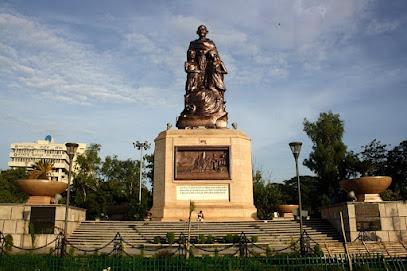
Sanjay Gandhi Biological Park, Patna
Discover the beauty and diversity of wildlife at Sanjay Gandhi Biological Park, a serene retreat in Patna, perfect for all nature enthusiasts.

Rajdhani Vatika
Discover the beauty of Rajdhani Vatika, a serene park in Patna, perfect for nature lovers and art enthusiasts alike, featuring stunning landscapes and unique sculptures.

Budhha Smriti Park
Discover the tranquil beauty of Buddha Smriti Park in Patna, a serene memorial park celebrating Lord Buddha's teachings amidst lush gardens and rich heritage.

Patna Junction railway station
Experience the vibrant atmosphere and rich heritage at Patna Junction, Bihar's bustling railway hub connecting you to India's diverse landscapes.

Golghar
Explore the historic Golghar in Patna, a majestic granary offering stunning views and a glimpse into Bihar's rich heritage.

Bihar Museum
Discover the rich heritage of Bihar at the Bihar Museum, showcasing remarkable archaeological artifacts and art in a stunning modern setting.

S.K.Puri Park
Discover tranquility and natural beauty at S.K. Puri Park, a green oasis in the heart of Patna, perfect for relaxation and exploration.

Kumhrar Park
Discover the serene beauty of Kumhrar Park in Patna, a green haven filled with history, nature, and tranquility for all visitors.

Patna One Plaza
Experience the best of shopping, dining, and entertainment at Patna One Plaza, Patna's premier shopping destination for tourists and locals alike.

ISKCON Temple Patna
Explore spirituality and serenity at ISKCON Temple Patna, a vibrant hub of devotion and cultural heritage in the heart of Bihar.
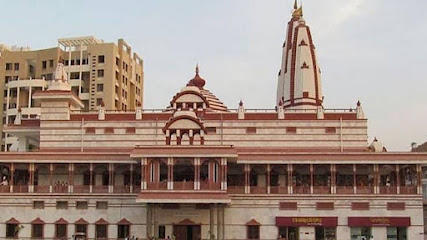
Shrikrishna Science Centre
Discover the engaging world of science at Shrikrishna Science Centre in Patna, a delightful destination for tourists and families alike.

Harding Park
Discover the tranquil beauty and cultural significance of Harding Park, a serene escape in the heart of Patna, Bihar.

Patna Museum
Discover the cultural richness of Bihar at Patna Museum, a premier destination showcasing historical artifacts and art in a beautiful setting.

Indian Summer Cafe
Experience culinary excellence at Indian Summer Cafe in Patna, where fine dining meets casual comfort in a vibrant atmosphere.

Unmissable attractions to see
Gandhi Maidan
Explore the rich history and natural beauty of Gandhi Maidan, a key landmark and city park in the heart of Patna, Bihar.
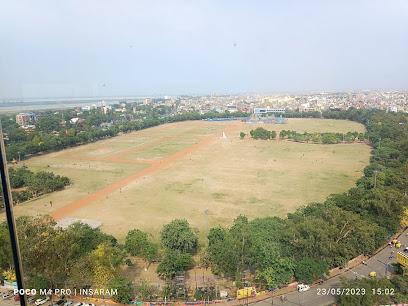
Sanjay Gandhi Biological Park, Patna
Explore the vibrant Sanjay Gandhi Biological Park in Patna, a perfect blend of nature, wildlife, and educational experiences for tourists.

Rajdhani Vatika
Explore Rajdhani Vatika in Patna for a perfect blend of nature, art, and tranquility, making it a must-visit destination for all travelers.

Buddha Smriti Park
Discover tranquility and spiritual enlightenment at Buddha Smriti Park, a beautiful memorial dedicated to the teachings of Lord Buddha in Patna.

Takhat Shri Harimandir Ji Patna Sahib
Discover the spiritual essence of Sikhism at Takhat Shri Harimandir Ji Patna Sahib, a sacred Gurudwara that combines history, culture, and community.

Bihar Museum
Explore the Bihar Museum: A vibrant celebration of art, history, and culture, showcasing India's rich heritage in the heart of Patna.

Gandhi Ghat, Patna
Explore the serene Gandhi Ghat in Patna, a beautiful riverside memorial dedicated to Mahatma Gandhi, offering tranquility and cultural richness.

ISKCON Temple Patna
Immerse yourself in spirituality at ISKCON Temple Patna, a tranquil retreat showcasing the beauty of Hindu devotion in the heart of Bihar.

S.K.Puri Park
Discover tranquility and nature at S.K.Puri Park, a must-visit green space in the heart of Patna, Bihar.

Kumhrar Park
Discover the serene beauty and rich history of Kumhrar Park in Patna, a perfect getaway for nature lovers and history enthusiasts alike.

BSPHCL Energy Park
Experience tranquility and natural beauty at BSPHCL Energy Park in Patna, an urban oasis perfect for relaxation and family fun.

Shivaji Park
Discover the tranquility of Shivaji Park, a lush green haven in Patna perfect for relaxation, family fun, and outdoor activities.

Funtasia Water Park
Experience the thrill of water rides and relaxation at Funtasia Water Park, a must-visit destination in Bihar for tourists of all ages.

Shrikrishna Science Centre
Discover the magic of science at Shrikrishna Science Centre in Patna, where interactive exhibits and engaging displays make learning fun for all ages.

Harding Park
Explore the lush landscapes and serene ambiance of Harding Park in Patna, a perfect retreat for relaxation and family fun amidst nature.

Essential places to dine
Foresto Paradise
Discover the exquisite flavors at Foresto Paradise - Patna's ultimate family-friendly barbecue fine dining destination.

Barbeque Nation
Experience the best of Indian barbecue at Barbeque Nation in Patna - where flavors meet festivity in every bite.

Bansi Vihar Restaurant
Discover authentic South Indian flavors at Bansi Vihar Restaurant in Patna - a must-visit vegetarian haven for food lovers.

Pind The Revolving Restaurant
Experience exquisite dining with panoramic views at Pind The Revolving Restaurant in Patna—where culinary delights meet breathtaking cityscapes.

Aasman Restaurant
Discover the vibrant flavors of modern Indian and Thai cuisine at Aasman Restaurant in Patna, where family-friendly dining meets stunning city views.

NIRVANA The Fine Dine
Experience the best of Indian and Chinese cuisine at Nirvana The Fine Dine in Patna - a must-visit for food lovers.

Basant Vihar
Discover authentic South Indian vegetarian cuisine at Basant Vihar in Patna – a culinary gem for tourists seeking flavorful dining experiences.

Swaaddesh
Experience authentic Indian cuisine at Swaaddesh in Patna - where tradition meets taste in every dish.

CookBook Cafe
Experience culinary excellence at CookBook Cafe in Patna - where Asian flavors meet European elegance.

Somen19
Discover the vibrant flavors of Indian cuisine at Somen19 in Patna – where tradition meets taste.

Indian Summer Cafe
Experience culinary excellence at Indian Summer Cafe in Patna - where fine dining meets cozy ambiance.

17 Degrees
Discover culinary excellence at 17 Degrees in Patna – where Indian flavors meet fine dining elegance.

Indie Kulture
Discover exquisite modern European cuisine at Indie Kulture in Patna – where culinary artistry meets vibrant atmosphere.

Kapil Dev's Elevens
Explore Kapil Dev's Elevens in Patna for an unforgettable dining experience blending culinary delights with cricket nostalgia.

Pukhtaan - The Royal Taste of India
Experience royal Indian flavors at Pukhtaan in Patna – where tradition meets taste in every dish.

Markets, malls and hidden boutiques
Girija Fashion
Discover a blend of traditional and modern styles at Girija Fashion, Patna's premier clothing store for every fashion enthusiast.

Khadi Mall
Explore Khadi Mall in Patna for a unique shopping experience featuring traditional Indian textiles and sustainable fashion choices.

Shoppers Stop
Explore Shoppers Stop in Patna for a diverse shopping experience featuring the latest fashion trends, accessories, and lifestyle products in a vibrant atmosphere.
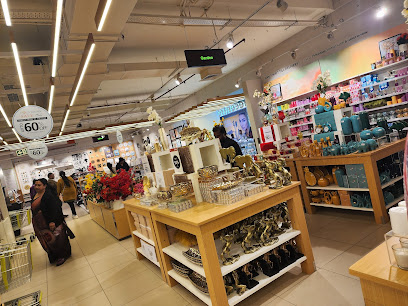
Bazar India
Discover unique fashion at Bazar India, a vibrant clothing store and shopping mall in Patna, offering an array of traditional and contemporary attire.

Lifestyle Stores
Explore Lifestyle Stores in Patna for a diverse range of fashion and cosmetics; your one-stop shopping destination awaits!

Archies Gallery (Best Wishes)
Discover unique gifts and souvenirs at Archies Gallery, a beloved shopping destination in Patna, Bihar, perfect for tourists seeking local treasures.

Miscellaneous Store Patna
Experience the vibrant shopping culture at Miscellaneous Store Patna, where local crafts meet modern trends in a bustling atmosphere.
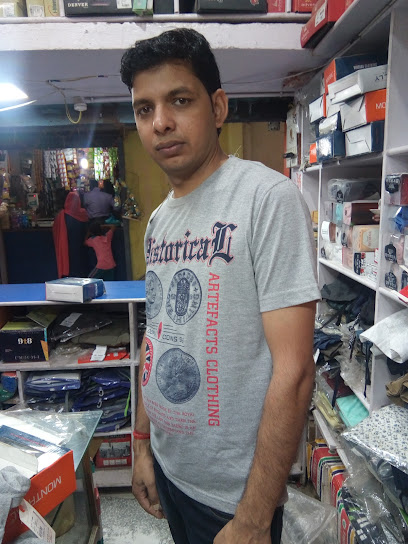
Manish Saree Emporium(Best Lehenga Store)
Discover the magic of bridal attire at Manish Saree Emporium, Patna's finest store for exquisite lehengas and sarees tailored for your special day.

Paridhan
Explore the exquisite collection of traditional and contemporary clothing at Paridhan in Patna, Bihar, a haven for fashion enthusiasts.

Fabindia, Buddh Marg, Patna
Discover the essence of Indian craftsmanship at Fabindia in Patna, offering unique ethnic wear and handcrafted products for every fashion enthusiast.

Bandhan by Neha Jain-Designer Saree Shop|Designer Lehenga Shop|Best Boutique In boring road Patna
Explore Bandhan by Neha Jain for exquisite designer sarees, lehengas, and custom-tailored outfits in Patna, Bihar.

Aan Shoping - Best Lehenga & Saree Shop in Patna | Suit & Ethnic Wear in Lalji Market, Patna City
Explore Aan Shopping in Patna for the finest bridal and ethnic wear, featuring exquisite lehengas and sarees that celebrate Indian fashion.

Firstcry.com Store EBC Road
Explore a world of baby essentials at Firstcry.com Store in Patna - perfect for all your infant and toddler needs, from clothes to toys and more.
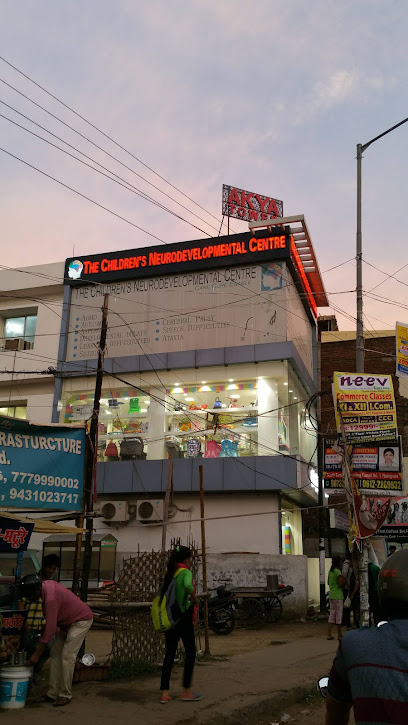
Ajanta Sports & Gifts Crafts
Explore unique handcrafted treasures at Ajanta Sports & Gifts Crafts in Patna, celebrating Bihar's rich artistic heritage.

Muskan Styleroute
Discover the latest trends in women's fashion at Muskan Styleroute, Patna's premier clothing destination for style and elegance.

Essential bars & hidden hideouts
The Soda Fountain & Milk Bar
Experience a delightful blend of flavors at The Soda Fountain & Milk Bar in Patna, where every bite is a taste of happiness.

Smookah Cafe N Lounge - Best Hookah Cafe
Experience the vibrant culture of hookah and delicious cuisine at Smookah Cafe N Lounge in Patna, where relaxation meets social excitement.

The Purple Lounge
Experience the vibrant nightlife at The Purple Lounge in Patna, where relaxation meets entertainment in a cozy atmosphere.

BARA KOTHI
Discover tranquility at Bara Kothi, a cozy lounge in Patna offering delightful refreshments and a peaceful atmosphere for all visitors.

Anish Singh Patna
Discover the vibrant nightlife of Patna at Anish Singh Patna, where live music and local talent create an unforgettable experience.

Bihar Bar Council Hotel
Experience the vibrant atmosphere and delicious fast food at Bihar Bar Council Hotel, your perfect retreat in the heart of Patna.

GOODFEEL BEER SHOP
Discover the vibrant atmosphere and diverse beer selection at GOODFEEL BEER SHOP in Patna, a perfect social spot for tourists and locals alike.
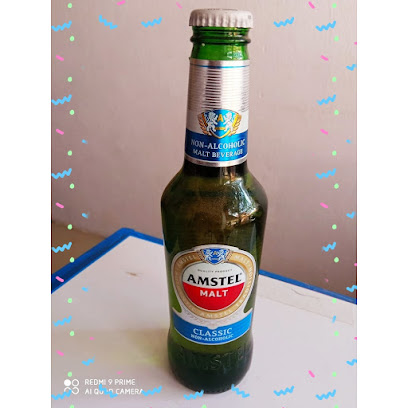
F-191 p.c colony
Experience relaxation and comfort at F-191 p.c colony, your ideal lounge destination in Patna, Bihar.
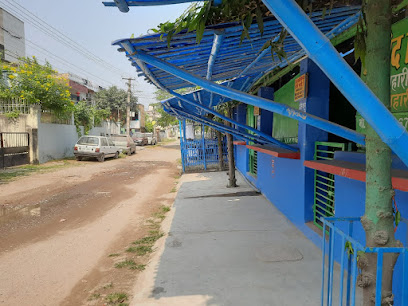
Flair Mania Bartending Events in india
Experience the vibrant world of mixology at Flair Mania Bartending School in Patna, where learning becomes a flavorful adventure.

Shanti Bar
Discover Shanti Bar in Patna: A serene escape with delightful drinks and a cozy atmosphere perfect for unwinding after a day of exploration.

Vip Lounge
Discover the sophistication of Vip Lounge in Patna, where elegant decor meets a diverse drink menu for an unforgettable nightlife experience.

D J ROOM
Discover the lively D J ROOM in Patna, where vibrant nightlife meets delightful drinks in a welcoming atmosphere.

Buffalo House
Experience the vibrant nightlife at Buffalo House in Patna, a lively bar offering a variety of drinks in a welcoming atmosphere.

A1 patna mocktail
Discover the lively A1 Patna Mocktail, where innovative mocktails and delicious grilled dishes come together in the heart of Patna.

Dhurva more
Discover the vibrant nightlife at Dhurva More, a bar in Patna, Bihar, known for its lively atmosphere and eclectic drink selection.

Local Phrases
-
- Helloनमस्ते
[Namaste] - Goodbyeअलविदा
[Alvida] - Yesहाँ
[Haan] - Noनहीं
[Nahi] - Please/You're welcomeकृपया
[Kripaya] - Thank youधन्यवाद
[Dhanyavaad] - Excuse me/Sorryक्षमा कीजिए
[Kshama keejiye] - How are you?आप कैसे हैं?
[Aap kaise hain?] - Fine. And you?ठीक हूँ। और आप?
[Theek hoon. Aur aap?] - Do you speak English?क्या आप अंग्रेज़ी बोलते हैं?
[Kya aap angrezi bolte hain?] - I don't understandमैं समझ नहीं पा रहा हूँ
[Main samajh nahi pa raha hoon]
- Helloनमस्ते
-
- I'd like to see the menu, pleaseकृपया मेन्यू देखना चाहूं
[Kripaya menu dekhna chahoon] - I don't eat meatमैं मांस नहीं खाता
[Main maans nahi khaata] - Cheers!चियर्स!
[Cheers!] - I would like to pay, pleaseकृपया मुझे चुकाना है
[Kripaya mujhe chukana hai]
- I'd like to see the menu, pleaseकृपया मेन्यू देखना चाहूं
-
- Help!बचाओ!
[Bachao!] - Go away!चले जाओ!
[Chale jao!] - Call the Police!पुलिस को बुलाओ!
[Police ko bulao!] - Call a doctor!डॉक्टर को बुलाओ!
[Doctor ko bulao!] - I'm lostमैं खो गया हूँ
[Main kho gaya hoon] - I'm illमुझे बीमारी है
[Mujhe bimari hai]
- Help!बचाओ!
-
- I'd like to buy...मैं खरीदना चाहूंगा...
[Main khareedna chahunga...] - I'm just lookingमैं बस देख रहा हूँ
[Main bas dekh raha hoon] - How much is it?यह कितने का है?
[Yeh kitne ka hai?] - That's too expensiveयह बहुत महंगा है
[Yeh bahut mehnga hai] - Can you lower the price?क्या आप कीमत कम कर सकते हैं?
[Kya aap keemat kam kar sakte hain?]
- I'd like to buy...मैं खरीदना चाहूंगा...
-
- What time is it?समय क्या है?
[Samay kya hai?] - It's one o'clockएक बजे हैं
[Ek baje hain] - Half past (10)दस बजकर पंद्रह मिनट हैं
[Das bajkar pandrah minute hain] - Morningसुबह
[Subah] - Afternoonदोपहर
[Dopahar] - Eveningशाम
[Shaam] - Yesterdayकल
[Kal] - Todayआज
[Aaj] - Tomorrowकल
[Kal] - 1एक
[Ek] - 2दो
[Do] - 3तीन
[Teen] - 4चार
[Char] - 5पांच
[Paanch] - 6छह
[Chhah] - 7सात
[Saath] - 8आठ
[Aath] - 9नौ
[Nau] - 10दस
[Das]
- What time is it?समय क्या है?
-
- Where's a/the...?... कहाँ है?
[... kahan hai?] - What's the address?पता क्या है?
[Pata kya hai?] - Can you show me (on the map)?क्या आप मुझे दिखा सकते हैं (नक्शे पर)?
[Kya aap mujhe dikha sakte hain (naksha par)?] - When's the next (bus)?अगली (बस) कब है?
[Agli (bus) kab hai?] - A ticket (to ....)एक टिकट (... के लिए)
[Ek ticket (... ke liye)]
- Where's a/the...?... कहाँ है?
History of Patna
-
Patna, known historically as Pataliputra, was founded in 490 BCE by Ajatashatru, the king of Magadha. The city became the capital of the Magadha Empire under the Maurya and Gupta dynasties, making it a thriving center for commerce and politics in ancient India. Pataliputra was a grand city with wooden palaces, fortified walls, and a bustling marketplace, serving as a hub for scholars, merchants, and artisans.
-
Under the Mauryan Empire, especially during the reign of Emperor Ashoka in the 3rd century BCE, Pataliputra reached its zenith. Ashoka, who initially expanded his empire through warfare, later embraced Buddhism and turned Pataliputra into a major center for Buddhist learning and culture. The city housed various stupas and monasteries, attracting monks and pilgrims from across Asia.
-
The Gupta Empire, which ruled from the 4th to the 6th century CE, is often referred to as the 'Golden Age of India.' Pataliputra flourished as a center of art, science, and literature during this period. The city's universities and libraries attracted scholars such as Aryabhata, who made significant contributions to mathematics and astronomy. The artistic achievements of this era, including intricate sculptures and temples, are still celebrated today.
-
Following the fall of the Gupta Empire, Pataliputra faced periods of decline and transformation. The city was invaded by various dynasties, including the Huns and later the Muslim rulers. By the medieval period, the city's prominence had diminished, though it continued to be an important regional center under the Delhi Sultanate and the Mughal Empire.
-
During British rule in the 18th and 19th centuries, Patna regained some of its importance as a commercial and administrative center. The city became a key point in the opium trade and the indigo plantations, and its strategic location along the Ganges River made it a vital hub for transportation. British colonial architecture from this period still stands in parts of the city, reflecting its historical significance.
-
Patna played a significant role in the Indian independence movement. The city was a hotbed of political activity, with leaders like Rajendra Prasad, who later became the first President of India, hailing from the region. The Quit India Movement and other nationalist activities saw strong participation from the people of Patna, making it a crucial site in the struggle for freedom.
-
Today, Patna is the capital of the Indian state of Bihar and a bustling metropolis. The city seamlessly blends its rich historical heritage with modern advancements. Landmarks like the Golghar, Patna Museum, and the Takht Sri Patna Sahib Gurudwara reflect its diverse cultural history. Modern Patna is also an educational center, home to prestigious institutions like Patna University and the Indian Institute of Technology (IIT).
Patna Essentials
-
Patna is well-connected to major cities in India by air, rail, and road. The Jay Prakash Narayan International Airport (PAT) in Patna offers both domestic and limited international flights. Major airlines like Air India, IndiGo, and SpiceJet operate regular flights to and from Patna. Patna Junction Railway Station is a major rail hub, with trains connecting to Delhi, Kolkata, Mumbai, and other cities. National highways NH31, NH30, and NH19 connect Patna to various parts of India, making it accessible by road.
-
Within Patna, transportation options include auto-rickshaws, cycle-rickshaws, and taxis. Ride-sharing services like Uber and Ola are also available. The city’s bus service, operated by Bihar State Road Transport Corporation (BSRTC), covers most of the city. For a more local experience, consider hiring a cycle-rickshaw for short distances. Renting a car is another option, but traffic can be congested, so be prepared for delays.
-
The official currency in Patna is the Indian Rupee (INR). Credit and debit cards are widely accepted in hotels, restaurants, and shops, but it is advisable to carry some cash for smaller establishments and local markets. ATMs are plentiful in Patna, with major banks like State Bank of India (SBI), HDFC Bank, and ICICI Bank providing 24/7 services.
-
Patna is generally safe for tourists, but it is wise to take standard precautions. Avoid walking alone late at night, especially in less crowded areas. Some neighborhoods with higher crime rates include areas around Patna Junction and certain parts of old Patna City. Always keep an eye on your belongings and be cautious of pickpockets in crowded places like markets and public transport.
-
In case of an emergency, dial 100 for police, 101 for fire, and 102 for medical assistance. Major hospitals like Patna Medical College and Hospital (PMCH) and AIIMS Patna offer emergency medical services. It is advisable to have travel insurance that covers medical emergencies. For minor health issues, pharmacists are available and can provide over-the-counter medications.
-
Fashion: Do dress modestly, especially when visiting religious sites. Avoid wearing revealing clothing. Religion: Do respect local customs and traditions. Always remove your shoes and cover your head when entering temples. Public Transport: Do be respectful and give up your seat to elderly passengers. Don't eat or drink on public transport. Greetings: Do greet people with a 'Namaste' and a slight bow. Handshakes are also acceptable. Eating & Drinking: Do try local delicacies like Litti Chokha and Sattu Paratha. Don't refuse hospitality, as it is considered impolite.
-
To experience Patna like a local, visit the local markets such as Hathwa Market and Maurya Lok Complex, where you can buy traditional Bihari goods. Engage with locals, who are often friendly and willing to share stories about the city’s history and culture. Don’t miss visiting historical sites like Golghar, Gandhi Maidan, and Patna Sahib Gurudwara. For a unique experience, take a boat ride on the Ganges River during sunset.
Nearby Cities to Patna
-
Things To Do in Varanasi
-
Things To Do in Chitwan
-
Things To Do in Patan
-
Things To Do in Bhaktapur
-
Things To Do in Kathmandu
-
Things To Do in Nagarkot
-
Things To Do in Ranchi
-
Things To Do in Bandipur
-
Things To Do in Gorkha
-
Things To Do in Namche Bazaar
-
Things To Do in Pokhara
-
Things To Do in Siliguri
-
Things To Do in Darjeeling
-
Things To Do in Lumbini
-
Things To Do in Rajshahi


















